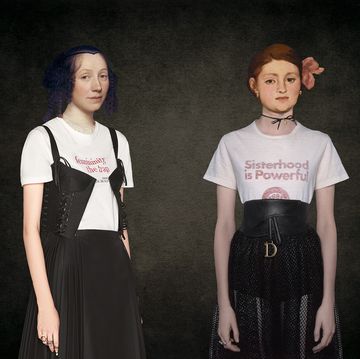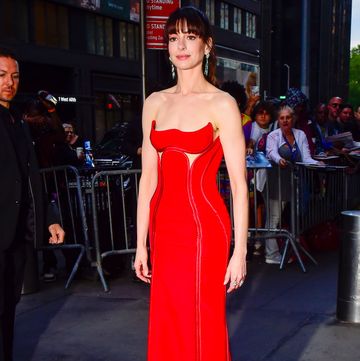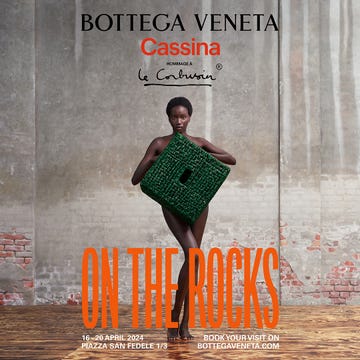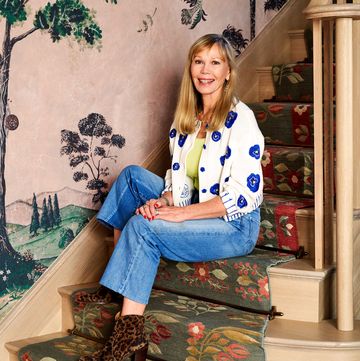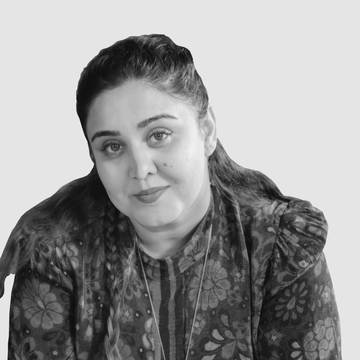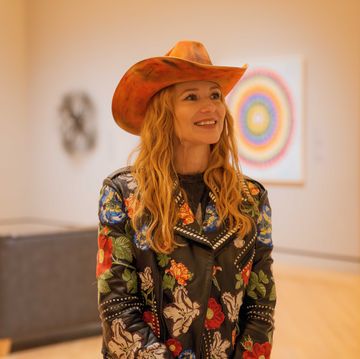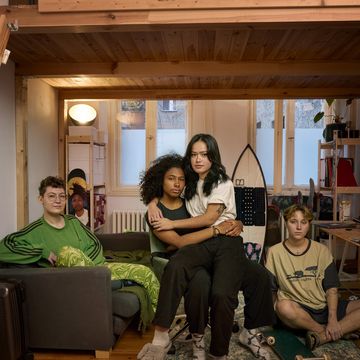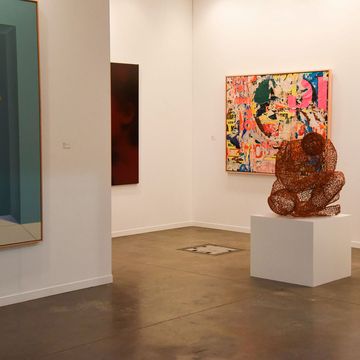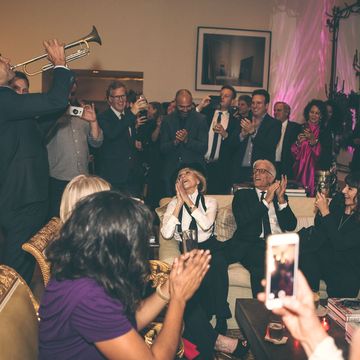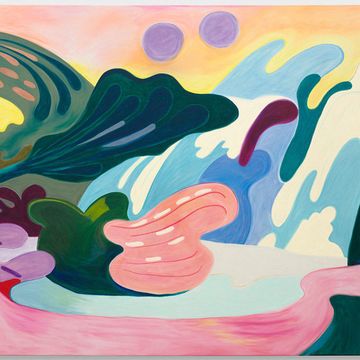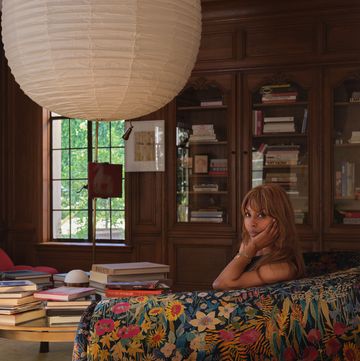Nona Faustine's photographs are blowing up on Facebook and no one is more surprised than her. Born and raised in Brooklyn, with a distinct city accent, her tone is as light as her work is somber. In the "White Shoes" photo series, Faustine appears in the places where African slaves were bought, sold, and traded in 1620's New York City. Her expression is solemn, in some photos there is a shackle on one of her limbs, and aside from her shoes, she is completely naked.
As a single mother, Faustine attended the International Center for Photography at Bard College and received her M.F.A. in 2013. Despite feeling as though she didn't possess the same language and technical skills as her classmates, she forged ahead in her art-making, determined to make them eat the words, "You don't belong here." Now that Faustine's work is steadily gaining recognition she's finally able to pay homage to her ancestors the best way she knows how: telling their true story and beating the odds.
I like to think that every piece of art has an inciting incident, some happening or realization that plants the seed of its own creation. What would you say was the inciting incident for your "White Shoes" series?
I always wanted to make a really powerful piece of work, and there are things you carry with you throughout your life: ideas, incidents, and history. The story of my life is a family impacted by the fact that I had a great-grandmother who was an enslaved African, and my mother grew up with her. She told [my mother] all the stories of her life. Then there was me, being a born and bred New Yorker, discovering the African Burial Ground and realizing there was slavery here in this city.
How did your personal story collide with the NYC slave trade?
In ["White Shoes"] I'm talking about who I am, the impact of that history on me, my place in that history today, and how it follows us all. Today it's Serena Williams, Michelle Obama, Gabby Sidibe, and Nona Faustine. You look at women in the past, it's Saartjie Baartman. Our bodies have always been a target. All of that came together for me one day.
How did you make the decision to focus on the body—your own body—for this project?
I spent the summer prior to my second year of graduate school at the beach. I never used to go to the beach, I would never put on a bathing suit, and I said this summer I'm going to the beach, I'm taking my little girl to the beach, and we're just going to hang out. And I saw all these bodies, all different sizes and everything, and I thought, 'Yeah this is great. Fuck it!' Part of me in that experience celebrates the body, the imperfect body, the body that just gave birth, the old body, the flabby body, and especially, the black body.
When you're exposed in public spaces like City Hall or Wall Street, what are you feeling in the moment?
We had to move very quickly. I'm not trying to have any run-ins with the NYPD for being fully nude in New York City. When I'm out there, even though I'm a descendent of enslaved Africans and influenced by enslaved women, I'm out there as a free black woman. And I'm walking up those steps as a free black woman, and I'm celebrating my freedom. There's a reference to all the history, but I'm in the present, and I'm free.
For some people, your photos have been a revelation. They didn't realize slave trading ever happened in New York City. Why do you think people remain unaware of this city's history with slavery?
I don't know because it is not a secret. It's like anything. You just pick up a book on whatever topic you're interested in and you'll find a lot of information.
What kinds of reactions has "White Shoes" elicited from people around you?
My Facebook page exploded, friend requests exploded, my Instagram exploded. I'm not really great at Instagram, but I have an account, so when those numbers went up I knew something happened here. Lots of black women have embraced the art. It's talking about pain and it's talking about celebration, and they want desperately to see themselves in the larger media. It's not often we see someone who looks like me out there, and they embrace that. People have reached out to me from Tasmania, Paris, Germany, some guy told me all of Africa was behind me, and I thought Really? All of Africa? [laughs] You sure about that?
Any negative reactions?
You expect that from white men because they always want to try to talk about black women's bodies, and they stay lusting after black women and secretly fetishizing black women. Yet, they'll publicly get on an article that's talking about me and make a derogatory comment about my body. But when you see people who go out of their way to come to my Facebook page and leave a message under whatever article, "No one wants to see your big ass." I laugh because at this point, I've accepted my body and who I am, whether I lose weight or not. I have self-love. I have walked the walk, I have paid the price, and I accept myself with love. So, I laugh because those people have a problem that has no relation to me.
Do you know what it takes—knowing how the world looks at fat people, imperfect bodies, or old women—to actually say I'm going to strip my clothes off and I'm going to put myself out there? I'm not putting myself on a pedestal, but I'm saying know how the world looks at that action. Know how the world feels when I defy that and say, "I don't give a shit."
What do they have to say? I've already heard that for years. That's why I can laugh at it, because they don't know me.
Where do the White Shoes go from here?
It's something I'm continuing to work on. I'm continuing to shoot. I'm researching more sites. I've been in contact with different historians. I've also been reaching out to some city officials. I had a conversation with First Lady Chirlane McCray. When I was in Italy last month, I asked her to please let it be her duty while her husband is in his office to acknowledge these sites. I would love for there to be an interactive map for people who come to visit. Each site can be marked and people can go there to learn more about this city and it's history.
As an artist who is so cognizant of legacy, what do you hope your art does for your daughter's generation?
She already loves art. I've photographed her a lot, and I've photographed her with me. She's learning the power of image, and she's also learning how art can release tension within herself, how she can express her through art. I think she's getting a message of liberation. She's going to look back and see this Mommy she had who she loved, but who realized she had an imperfect body, and chose to be brave in it. I hope that she feels some liberation around her own body and whatever kind of body type she has.
Any advice for a young woman of color who dreams of being a photographer?
Go for it. We need more artists of color out there. And we need artists of color who are going to go the distance. Don't them stop you. There are so many roadblocks, ones they put out there for you, and ones you put out there yourself. I did that. I put roadblocks up for myself, and it took family support to encourage me to go back to it. It took me maturing a bit.
My life changed when I had a baby. I had to think about what was really important, what was the message I wanted to hand down to my daughter. You're talking about legacy? I wanted my daughter to be proud of me. I didn't want to have to tell her I gave up on my dreams.
Photography, and being an artist is not a career, it's a calling.



